Fear is basic survival mechanism which occurs in response to a specific stimulus, such as pain or the threat of danger. However, if a fearful dog is living constantly in fear, it can be a terrible thing.
Fearful Dog – Fear triggered by:
- External situations such as a new place (vet office)
- Auditory (noises or sounds that trigger fear)
- New animals (unfamiliar dogs, cats, etc)
- People (men and/or women)
- Pressure
Tips to Identify Dog Fear
- Anxiety is not fear. Anxiety is technically an upward energy, while fear is a downward (blocking) energy.
- To test fear, put your dog in a situation where you suspect they are fearful and offer the dog food that it would normally be interested in. How do they react?
- Watch for tucking of tail, hunching over, salivation, urinating, licking lips, poor eye contact, retracting or backing up
Tips to Help your Dog Overcome Fear
- Build strong communication bond with your dog. Successful communication builds trust and trust builds predictability in your dog
- Desensitize your dog by exposing them to new situations – people (men and woman), other dogs and animals, strange noises and objects
- Play Games such as tag, fetch, find the scent, etc. Games can really help build the dog’s confidence and overcome their fears
- Exercise! A healthy body equals a healthy mind!
We are here for you!
We’d love for you to share your dog fear experiences with us in the comments below. We do our best to answer every question posted![/fusion_builder_column][/fusion_builder_row][/fusion_builder_container]
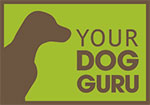
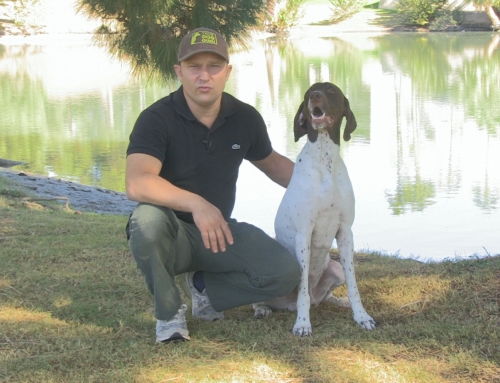
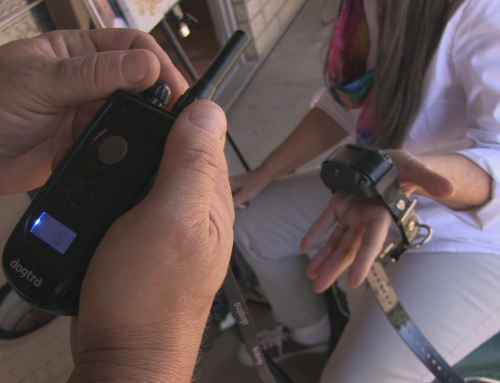
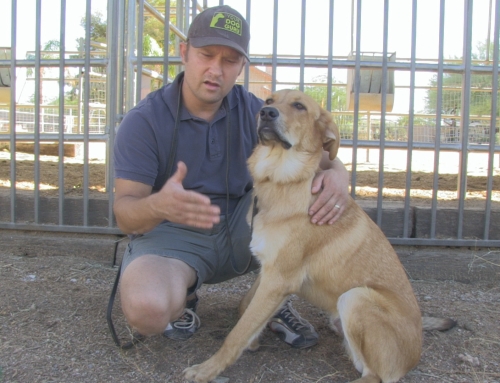
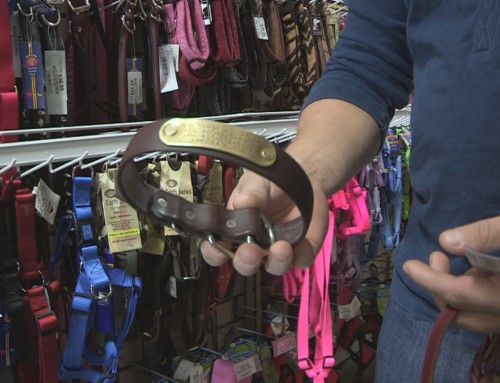
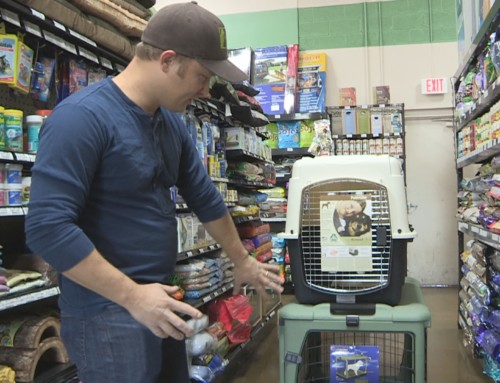
my dog nitro has fear problems with people ,noises, and a little separation anxiety with me only.i want him to be healthy dog but he is becoming fat and i dont know what to do he won’t go on walks
consider training Nitro to run on a treadmill each day to give him the exercise he needs. most dogs end up loving it because just as with humans, daily exercise can really boost energy, confidence, and overall feeling. some tips are posted here to get you started: http://www.yourdogguru.com/running-dogs-on-treadmill/. we actually have a full online course with very detailed steps on how to train this…it will be launching in the next couple weeks! if you don’t own a treadmill, many of our clients have been able to find ones on Craigslist for as low as $100!
can you give me tips on what to do??
We have a 5yr old Australian Shepherd. We got her 1 1/2yr ago. When we got her it was from an older couple who said they were not home enough to keep her because she was always taking off to other people’s houses. They lived in the country so she had freedom to go where she wanted when she wanted. We were also told she was not house broken. Our first night home with her since it was a new place we decided to see how she would do inside. She did great! No accidents at all. She had no problems with our 2 cats either. Even though one of them was continuously hissing at her. She has no interest in toys or balls. She a fear of anything that comes toward her that is not human or animal. We have 2 small children that like to play with balls and cars. Our dog (Aussie) will jump up and “slink” away if they come any where near her. She will not take her eyes off of it and you can see the look of fear on her face. She has become very intuitive about when certain medical conditions of mine will flare up. We were hoping to have her certified, but will be unable to if we can not correct this. She walks well on a leash and obeys commands well enough. She still has a few issues if she gets distracted however. With her unwilling to play games what can I do to help her through this? I would be forever grateful for any help or suggestions!
Hi Kim, it sounds like the original owners probably kept the dog indoors all the time and didn’t make any effort to train or socialize (at least not correctly). The first thing I would do is ramp up the daily exercise and outdoor exposure. I don’t mean just letting her run wide open in an open field. Take her out on a long walk, run or bike ride and make sure she’s heeled next to you and under control. This will get her senses woken up and she’s likely to respond better and be more interested in play. When playing, make sure you aren’t trying to force it or play too vigorously. Be sure that you aren’t leaving toys around the house either. This includes your kid’s toys. Take things slow and if she’s not interested in a toy or playing at that time, no big deal, just put the toy away and try again later. Take a very slow and methodical approach to this and she will come around.
Hello,
Was recommended by Midwestern University Animal Clinic where we take our dogs. Major issue with our Beagle. He has become very aggressive towards other dogs and us. Growling and biting. He will never come over and bite.At times very calm and obedient. Fearful for him. I am an animal lover but my partner since being bit is threatening to punch him.
Cases of aggression are very complicated. Please set up an evaluation with us.
Hi,
We have a 2 year old female German Shepherd with fear issues. Unfortunately we live in an area without any dog trainers, would really appreciate some advice! Given that we live on a large property in the middle of the forest we are able to avoid most of her triggers. However, not taking her with us anywhere is not sustainable in the long run, especially now that we have a baby on the way.
Perhaps her biggest fear is cars. Whenever she sees one in motion closer than 100 m she loses contact with the outside world completely, her only interest is in barking and lunging at the car. This has been an issue since she was about 5 months old. For months we tried to keep her outside trigger distance and when a car came passed we would give her a treat for turning around and looking at us, progressively we would move closer to the road, but despite months of working like this she never got to the point of being able to walk along a road,
The second issue is that we are guilty of not socialising her enough. When we got her, we had just moved to a new place, no family or friends within a 2 hour radius so visits were infrequent. We tried our best to let her say hello to everyone she met when we went for walks, but eventually this was no longer possible because whenever someone would approach us on the road she would start barking at them and lunging at them. Curiously she is usually ok if we meet people with dogs. She plays nice with other dogs and is confident around their owners. It is a horrible self reinforcing cycle now though, how do i socialise her when she just scares people off? She is normally great with people who come stay with us, although she visibly trembles when she first meets them.
She is also a shadow chaser. She loves chasing her ball and it is like the flickering lights on the livingroom wall is another ball for her to chase. Should I stop playing ball with her?
We love her to bits, we have a strong connection and she is very responsive apart from in the above situations! Desperate for help, really feel like we have messed her up, any advice greatly appreciated!
Hi Marit, all these issues are from a lack of foundation and communication with your dog. You need to start from square one with the basics and slowly build from there instead of trying to “fix” the issues individually. No amount of treats given to your dog on the side of a road is going to make her be okay with it if she’s already in distress and reacting by barking and lunging at people or cars. That would be like trying to address someone’s fear of heights or public speaking by feeding them chocolate cake. Instead, it has to be something they WANT to do and already possess the tools (trust, understanding, confidence, etc) to deal with. You need to start with training obedience in a very consistent and methodical way in a completely sterile (no distractions) environment first. Build a solid reward and communication system into your training. From there you can slowly introduce distractions and go from there. There’s no quick or easy fix here. The best resource we have to offer aside from our free videos on this website and YouTube, is our online training program. It takes you through our complete training regimen working with a real client’s dog and also provides a direct line of communication with Jimi. If you have any additional questions, feel free to reach out. Thank you!